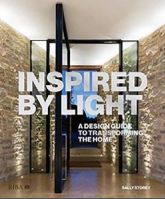Share
28.03.2017
Electricity: The Spark of Life
Posted by Karen Smart on 28 Mar 2017
Free exhibition at the Wellcome Collection

The story of electricity is the story of life itself. From the structure of the atom to the functioning of our brains, this invisible yet vital force is intrinsic to human life. For centuries electricity has captivated inventors, scientists and artists alike, and in the modern era, it has transformed our world.
From the first breaths of Frankenstein’s monster to the brutal simplicity of the execution chair, this exhibition contemplates the contradictory life-giving and death-dealing extremes generated by electricity and traces the story of how humanity has striven to understand, unlock and gain control over this invisible yet all-encompassing force, which continues to mystify and amaze.
I visited this fascinating exhibition on Saturday to check out the artifacts and discover more about the history of artificial lighting and its development over time. Below covers some of the milestones in artificial lighting history.

Detail from an illustration from the June 21, 1882 Harper's Weekly titled "The Electric Light In Houses: Laying The Tubes For Wires In The Streets Of New York." The illustration records the construction of Thomas Edison's first domestic incandescent lamp electric utility in New York City with the central station at Pearl Street.
Thomas Edison opened the Pearl Street power station to funnel electricity underground to the new incandescent bulbs that lit businesses and homes in lower Manhattan, Brush Electric, the United States Illuminating Company, and the East River Electrical Lighting Company were, along with Edison, given franchises to compete in Manhattan south of 136th Street. Raising poles and hanging electrical wires was much less expensive for electric and telephone companies than digging trenches and insulating and burying lines, as Edison had done downtown. The city, particularly in and around the financial district, resembled a "forest of poles."
In March 1888 New York City was buried under 22 inches of snow, stranding its millions of citizens in a complete whiteout. The image on the right shows the snow weighing down wires, cutting off electricity.
The Blizzard of 1888 was not directly responsible for the movement to bury New York City’s electrical hard wiring; the movement to bury the wires dated back to well before the storm and continued for two years after it. But the events of that frosty and dangerous March week dramatised the problem and contributed significantly to the developing movement to bury the wires.
This would be the start of the American National Grid. The underground grid system is still the adopted method for distributing electricity the world over.

Various bulbs from John Rylands Library, Manchester circa 1900
As filaments improved with tungsten replacing carbon, the development of electric light would become one of the most important applications of electricity in transforming the modern world. In Manchester, the John Rylands Library, which opened in 1900, was one of the first electrically lit buildings with its own onsite DC generator. At a time when electricity was not yet the dominant power source, the library opted for electric lighting over gas to protect antique books and manuscripts from fumes.
The emergence of the electric lighting coincided with the rise of the arts and crafts movement and is often associated with the design of early light fittings. It was fashionable to display the often highly ornamented bulbs quite prominently, to emphasise the variety of their shapes and patterns. But as the novelty value wore off and the short lifespan of the bulb was recognised, attention returned to the shades and fittings themselves.

Tubular lamp forming the word “NEON” Date unknown
Discharge tubes containing the noble gases helium, neon, argon, krypton and xenon have been used for advertising signs since the 1920s, though their colour and low brightness made them unsuitable for general lighting use. Neon light was invented by French chemist George Claude (1870-1960), and was first displayed to the public in Paris in 1910.

Taking an X-ray image using an early Crookes tube
Developed from the earlier Geissler tube – used for demonstrating electrical glow discharge similar to neon lighting – the Crookes tube consisted of a glass bulb containing a partial vacuum. It was used to discover and study cathode rays (streams of electrons) and, later, X-rays. This photograph shows how the Crookes tube was used to create a radiograph (a photographic image produced by X-rays) – also described by Tesla as a “shadowgraph”.











